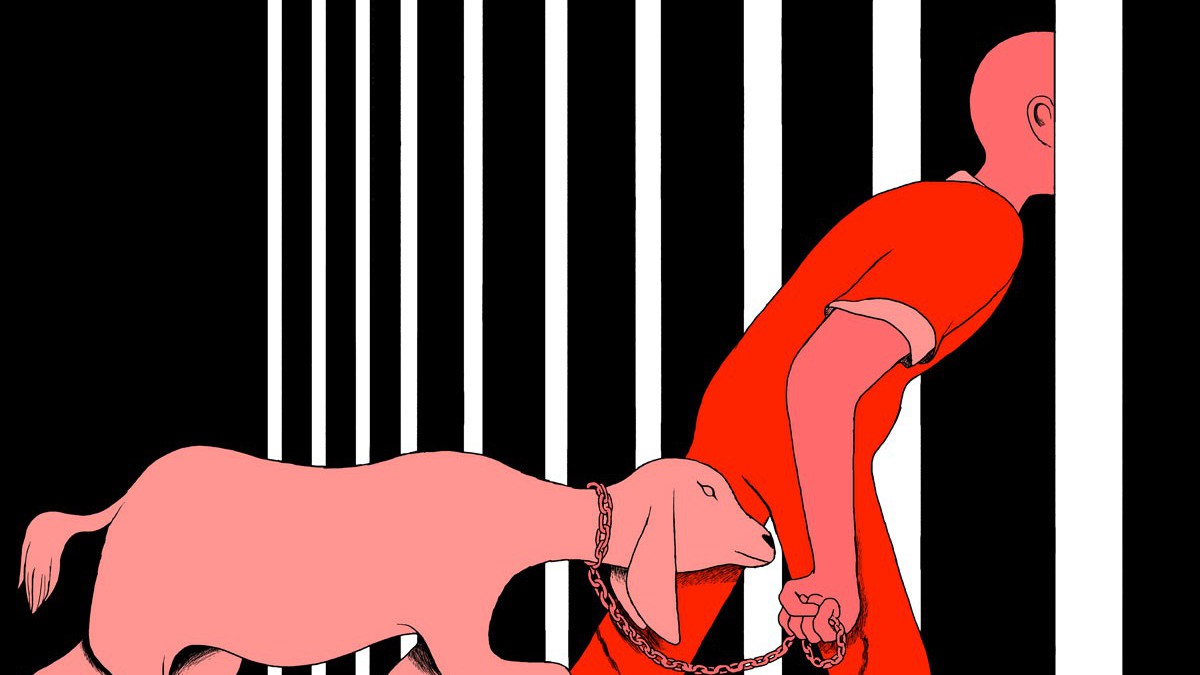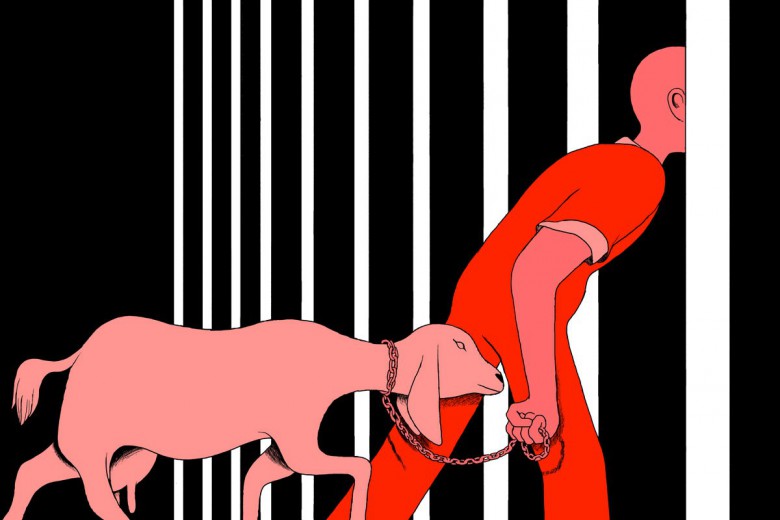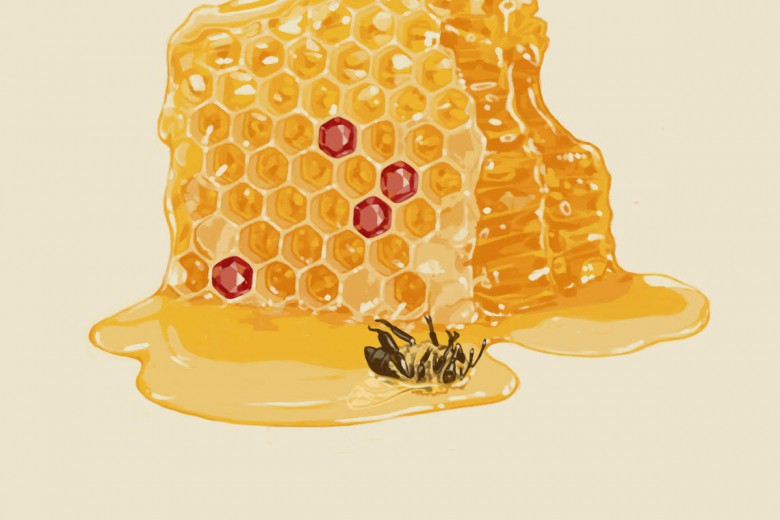We at Evolve Our Prison Farms (EOPF) appreciate Briarpatch’s recent article, “Milking prison labour” which shares many of our concerns over the new model selected for Canada’s restored prison farms. We would like to clarify certain aspects of our advocacy for an ethical approach to this federal program, and unravel a few more knotted layers of injustice.
Milking
In its original printed form, the article claimed that EOPF wishes to see “an entirely vegan operation” for Canada’s restored prison farms (the online version of the article has since been corrected). Veganism, as a personal dietary choice, is not an element of our campaign. What we do endorse is a model of plant-based agriculture and animal-assisted therapy (AAT), which does not involve the sexual manipulation and slaughter of animals. These practices are necessary components of the milking process – females are inseminated in repeated cycles to maintain consistent milk production, and “spent” mothers and male offspring are systematically slaughtered. For these reasons, independent of food politics, we believe that dairy operations are incompatible with a program of prisoner rehabilitation and therapy.
In 2016, an inmate and editor of Out of Bounds prison magazine – who is quoted in “Milking prison labour” – wrote to us to express his support of our campaign, identifying himself as a vegetarian who found our proposal “not only compelling but forward-thinking.” This prisoner joined EOPF in affirming the redeeming aspects of the former prison farm program, which fed prisoners and included individualized interaction with dairy cows (who, despite their therapeutic role, still ended up butchered by prisoners in the Joyceville abattoir).
Briarpatch’s article fails to acknowledge this crucial nuance, falsely claiming that we at EOPF “believe that there’s no benefit for incarcerated people in working with animals that are destined for milk production and, ultimately, slaughter.” Moreover, the vegetarian prisoner’s quote in the article – “Working around cattle, even cattle meant for slaughter, was redeeming” – is decontextualized in such a way as to support the reintroduction of slaughter industries to the prison farm program – a position he personally opposes. When contacted by EOPF for comment, his response was “Man I’m pissed off.”
Animal-assisted therapy, not “pets”
What role will animals play in the new prison farm program? The planned operation, as confirmed to EOPF by the Correctional Service of Canada (CSC), was to gradually scale to 1,500 goats in a contained industrial facility – though right now, CSC says the size of the goat herd is yet undetermined. While CSC claims that no contracts have been signed yet, it’s expected that the Joyceville farm will supply milk for a new Chinese-government-controlled infant formula factory in Kingston. A handful of beef and dairy cows will also be farmed and slaughtered for external markets.
Throughout our campaign, EOPF has affirmed the benefits of animal interaction. Former prison farm worker Shaun Shannon summed it up in an interview with EOPF: “The cows saved me. It wasn’t the guards, it wasn’t the [dairy] op, it was the cows.”
It was the cows themselves – their intelligence, their unique charisma, their capacity for love – that had a transformative effect on people like Shannon, whose favourite cow was an all-white beauty named Priscilla.
By contrast, Shannon and others describe many heartbreaking moments, when a cow or calf would die in the birthing process, or when a mother cow would attack the inmate entering her pen to take her calf away shortly after birth. “Cows are smart animals,” Shannon explains. “The mommas always knew, they knew what you were in there to do, and that momma would try to kill you. You had to be in and out with the calf as quick as you could go. Then she would cry and moo for days, it broke your heart.”
We can’t ignore the fact that forced insemination, removing kids and calves from their mothers, and slaughtering animals are counteractive to rehabilitative and therapeutic goals. A model of plant-based agriculture and AAT would preserve the therapeutic benefits of animal interaction without the disbenefits of animal agriculture. Briarpatch’s article dismissively equates our proposal for animal-assisted therapy to “treating them more like pets than farm animals.”
“Our animals are not pets and we are not a petting zoo!” says Keryn Denroche of Kindred Farm Sanctuary in B.C., which provides AAT for at-risk and traumatized children and youth, in an email to EOPF. “Cows, goats and any farm animal can be specifically socialized and trained for animal-assisted therapy. They are in a distinct line of work with structured outcomes and therapeutic goals compared to a pet who provides companionship.”
This is echoed by farmer Jeanne Selander who runs a therapeutic animal rescue program with inmates at Florida’s Monroe County Jail. “The goal is to rehabilitate the inmates, to improve their self-esteem and their outlook on life, to build compassion,” says Selander. “The goal is not to make a profit; [it’s] not greed. It is a goal of change, changing the lives of people and animals, and serving the community.”
Critically, this is also the position of the Correctional Service of Canada (CSC), whose own guidelines for AAT (which they call “pet-facilitated therapy”) in prisons require adherence to strict standards safeguarding the welfare of the animals. CSC identifies the potential for abuse of animals in prison programs, emphasizing that the safety and wellbeing of the animal is paramount and “precedes any therapeutic goals.” CSC affirms that all animals used in AAT – including farm animals – are “in every sense an individual” and that the benefits of AAT extend beyond inmates to the animals themselves who are “often saved from certain death.” It presents a curious double standard for CSC to introduce animals to the prison farms for the very purpose of capitalizing on their certain death.
Harm or heal?
What role will prisoners play in the new prison farm program? Under the old model, their labour had direct relevance to them; they gained pride and satisfaction in feeding themselves, fellow inmates, and surrounding communities. The new model introduces a precedent-setting shift in prison labour in Canada, feeding external and international markets.
It is important to note how the intensification of the prison industrial complex via the new prison farms is mirrored by the debasement of animals. Factory farming goats by the thousands (alongside cows) whose milk, babies, and bodies are mere commodities for external sale, reduces both prisoners and animals to units of production whose value is measured by their productivity and profitability. By contrast, a model of animal-assisted therapy, as proposed by Evolve Our Prison Farms, would accomplish the opposite: affirming the inherent value and dignity of every individual.
This complex discussion boils down to simple questions. Is it better for prison farms to feed prisoners or external markets? Is it better for prisoners to grow food in soil or to farm animals in an industrial facility? Is empathy better taught in a sanctuary or a slaughterhouse? Do the prison farms exist for the purpose of rehabilitation or for the purpose of institutional agribusiness?
What is the best possible model for the prison farms? There is only one answer: good for prisoners, good for animals, good for the environment. Anything else is not justice.







